Samsung Galaxy Nexus & Ice Cream Sandwich Review
by Brian Klug & Anand Lal Shimpi on January 18, 2012 1:34 PM ESTThe Keyboard
The stock Gingerbread keyboard was a significant step forward, but the ICS keyboard is really good. I don't know that there's much that's truly groundbreaking about the ICS keyboard, but it's at the point where short of Swype for those users who care about it, I would be very disappointed to see any third party keyboard replacements from HTC, Motorola or Samsung.
The basic layout hasn't changed from Gingerbread, although there are a few subtle differences. You get the same standard four row keyboard with two alternate modes (numerics and symbols). Where the Gingerbread/ICS keyboards differed from the standard iOS or Windows Phone keyboard is there's a fifth row of punctuation keys by default above the rest of the keyboard. This fifth (or first, depending on how you look at it) row actively changes into a list of predicted words. The word in the center is what the autocorrect engine believes you're typing, while the words on the left/right are alternates. While Gingerbread allowed you to scroll horizontally on this row, the items are fixed in ICS. As a consolation, you can bring up additional autocorrect suggestions by tapping and holding on a word in the prediction row. Accented characters are available by pressing and holding on keys that can be accented. Popup menus also exist for punctuation and the smiley key.
Keypresses are still accompanied by a magnified duplicate of the key itself. Unlike in Gingerbread where the magnified key hovered unconnected, the ICS keyboard connects the magnified key to the key itself. In my opinion this makes the keyboard look less chaotic when you're typing very quickly. Rather than giving the impression of random letters flying around everywhere, the animation serves its intended purpose better: letting you know what you just hit.
There's also a hidden Android Keyboard debug settings pane with some different themes that can be selected.
| Gingerbread vs. Ice Cream Sandwich - Keyboard & Autocorrect | ||||
| Gingerbread | Ice Cream Sandwich | |||
| Keyboard |
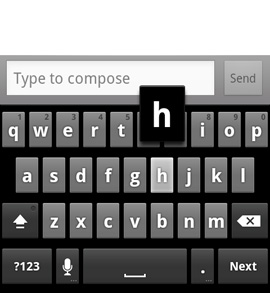 |
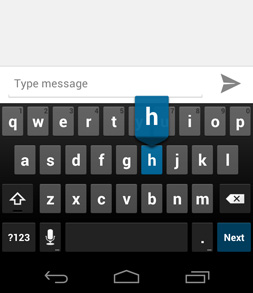 |
||
|
Quick Punctuation |
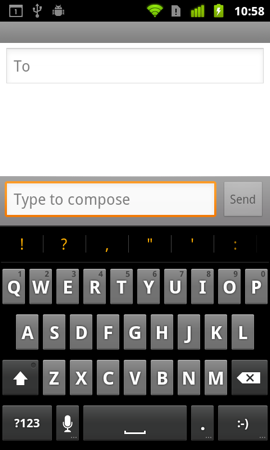 |
 |
||
| Autocorrect |
 |
 |
||
| Autocorrect |
 |
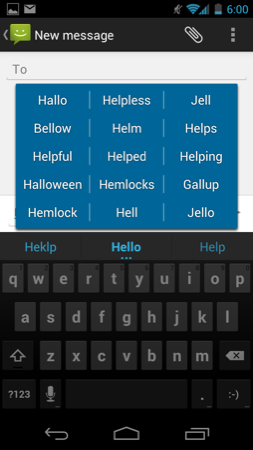 |
||
Facial Recognition
Android has historically offered multiple options to secure your phone or tablet. Ice Cream Sandwich continues the trend. You can choose a basic PIN with a minimum of four numbers and a maximum of 17. There's an alphanumeric password option, simple slide to unlock and no security at all. ICS adds a new option to the list: Face Unlock.
The feature is exactly what it sounds like. ICS can store a photo of your face and use it as authentication for unlocking your device. While you only need a single picture to start, Google recommends taking multiple photos in different lighting conditions, with/without glasses and with a clean vs. unshaven face if applicable. As a backup you have to provide ICS with a PIN in case it can't recognize your face (either due to lighting conditions or because of a recent tumble down some stairs).

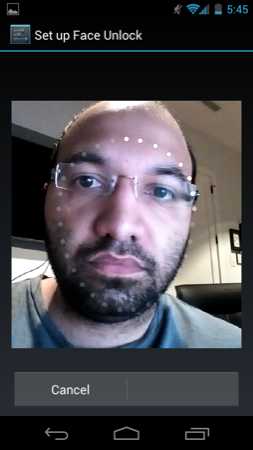
Google warns that someone who looks like you would be able to unlock your device, making Face Unlock less secure than a long PIN, pattern or password. Admittedly a thief would have to either be really lucky or know what you look like to fool the technology, but it is a valid point.

The feature actually works surprisingly well in practice. With Face Unlock enabled the lock screen has a front facing camera live view window that you're supposed to use to center your face. With the exception of really bright (with the light shining into the camera) or really dim scenarios, Face Unlock worked for me almost every time. When it works perfectly using your face to unlock the phone is extremely quick. In the right conditions I've seen ICS unlock itself a split second after I even saw my face on the screen. On average though the process is slower than typing in a PIN or using any of the other unlock methods. Furthermore, if you use your phone a lot at night (especially in cars) you have to hit the power/lock button then tap the lock icon to circumvent Face Unlock and go directly to your PIN/password/pattern. Finally, don't try to use Face Unlock to unlock your phone while driving - that's a recipe for bad, or worse, death.


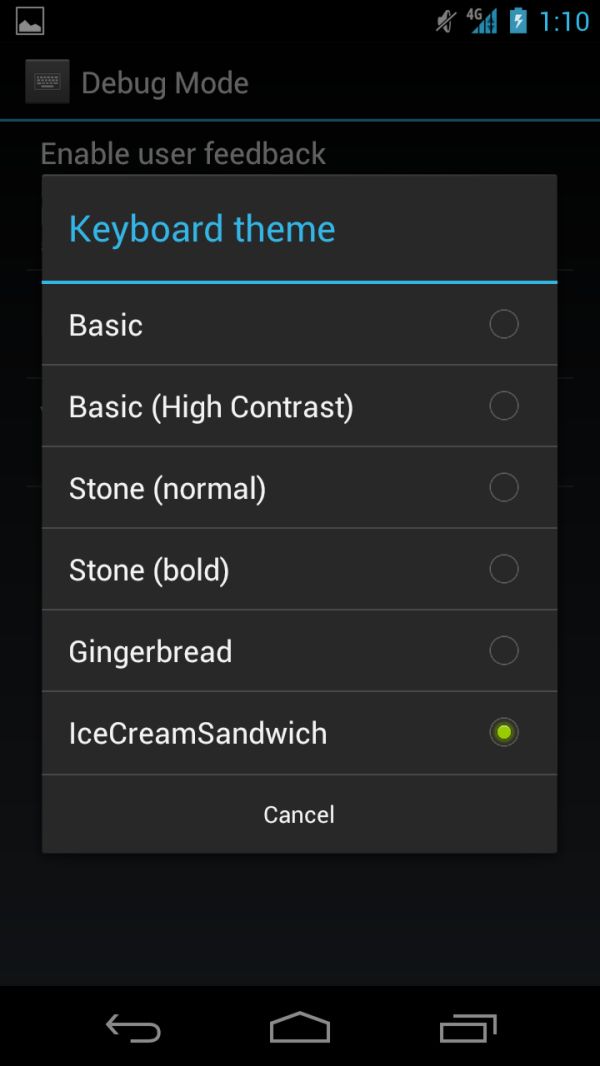
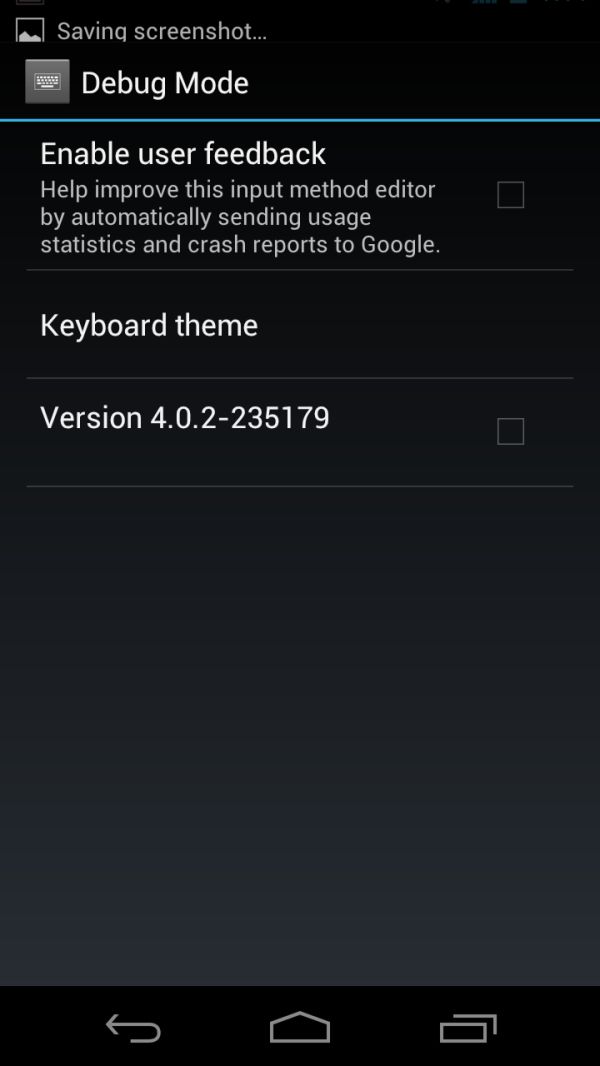








185 Comments
View All Comments
Insomniator - Wednesday, January 18, 2012 - link
I wonder if the Rezound's Adreno 220 will help with the delays using the ICS buttons.tipoo - Wednesday, January 18, 2012 - link
The chip in this one generally benchmarks right after the Mali 400, the fastest GPU in an Android phone right now. Its probably a software thing, not hardware.Insomniator - Wednesday, January 18, 2012 - link
According to anand's own benchmarks (can't find much else on the 220) the SGX540 is significantly slower...http://www.anandtech.com/show/4243/dual-core-snapd...
tipoo - Wednesday, January 18, 2012 - link
I know, but its still one of the faster GPU's out there. I don't see why the GPU would be a limitation on just the function buttons while the rest of the UI is buttery smooth.tipoo - Wednesday, January 18, 2012 - link
Also, one of the comments below ours show Android 4.03 being faster and almost eliminating that lag, so it was a software thing.doobydoo - Thursday, January 19, 2012 - link
Fair enough - it may have been a software thing.Nevertheless, it's a software thing which doesn't happen on the faster GPU of the Samsung Galaxy S2. So I'd say it's a bit of both.
zorxd - Friday, January 20, 2012 - link
Is the iPhone 4 with the slow SGX535 lagging? If not, how can it be a hardware thing?zorxd - Wednesday, January 18, 2012 - link
You are comparing a 1GHz TI OMAP4 SGX540 to a 1.5 GHz Snapdragon S3 Adreno 220.The CPU alone can explain the difference between the Optimus 3D (31 fps) and the qualcom developement platform (37-38 fps).
As you can see, single core devices using the SGX540 are even slower.
At a given CPU clock speed (let say the common 1.2 GHz) I think the SGX540 is faster than the Adreno 220.
jeremyshaw - Wednesday, January 18, 2012 - link
Different architecture. Snapdragon at 1.5GHz is probably a smidgen slower than Cortex-A9 at 1.2GHz. Remember Snapdragon as an amped-up Cortex A8.french toast - Wednesday, January 18, 2012 - link
Scorpion is not an amped up A8, they are not related in any way other than the v7 ISA.The adreno 220 is way more powerfull than a 540, the problem with it was the poor bandwidth and the terrible drivers qualcomm released it with, it you check out the scores of the samsung galaxy s2 skyrocket with those new drivers it is much faster.